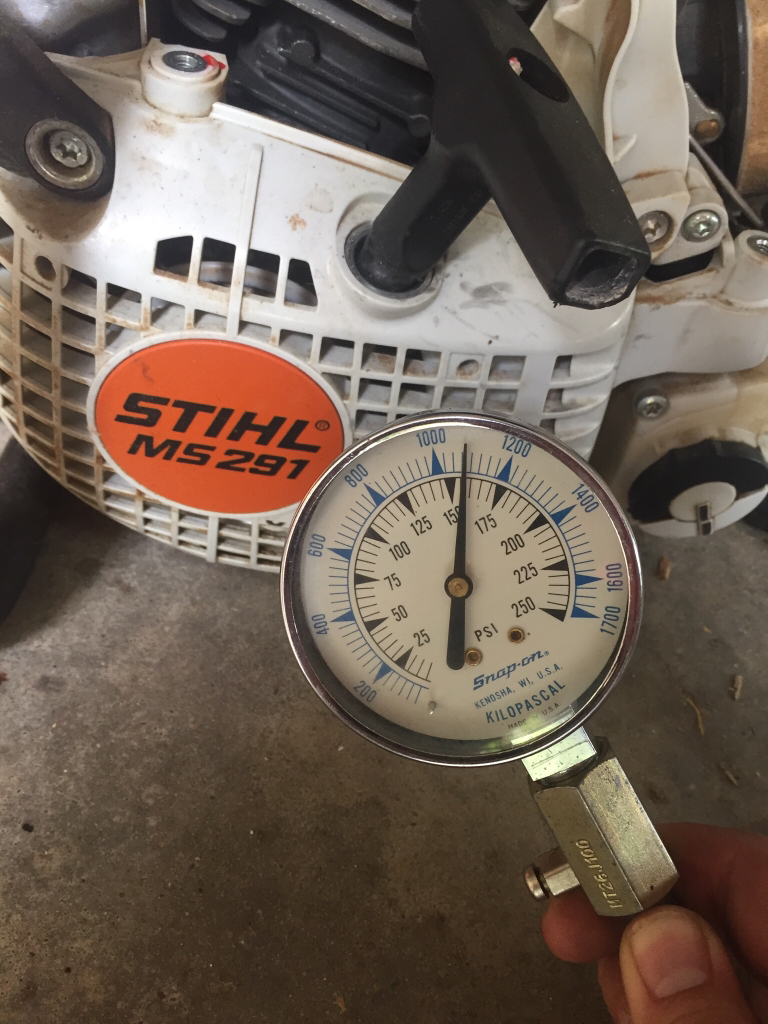Aggie 2012
ArboristSite Operative
Evenin gents
Got a question for y'all.
I have a snap on compression tester and I am trying to figure out if the reading is correct.
(See below setup)
I have tested on a newly rebuilt MS180C (new piston, rings, and jug from NWP)
But I'm only pulling 125 psi and the saw does not run right at all.
So I checked on an ms250 that runs decent
(See below)
Now the last picture is on my MS290 that only has around 10 tanks of fuel run through it so I know for sure that this aw should read well.
155
Are these numbers about right or are my results skewed due to this schrader valve located at the gauge and not the other end?




Sent from my iPhone using Tapatalk
Got a question for y'all.
I have a snap on compression tester and I am trying to figure out if the reading is correct.
(See below setup)
I have tested on a newly rebuilt MS180C (new piston, rings, and jug from NWP)
But I'm only pulling 125 psi and the saw does not run right at all.
So I checked on an ms250 that runs decent
(See below)
Now the last picture is on my MS290 that only has around 10 tanks of fuel run through it so I know for sure that this aw should read well.
155
Are these numbers about right or are my results skewed due to this schrader valve located at the gauge and not the other end?




Sent from my iPhone using Tapatalk







